Introduction
Hammered meat slice soup, a beloved dish in Chinese cuisine, is renowned for its tender meat textures and comforting broth. This dish, often called “捶打肉片汤” in Mandarin, transforms tough cuts of meat into silken slices through a meticulous process of pounding and marinating. The result is a harmonious blend of flavors and textures, where the meat melts in your mouth while the aromatic broth soothes the soul. Whether you’re a novice cook or a seasoned chef, mastering this recipe will add an elegant touch to your culinary repertoire. This guide will walk you through every step, from selecting the finest ingredients to serving a bowl that rivals your favorite restaurant’s version.
Historical and Cultural Background
The art of tenderizing meat by pounding dates back centuries in Chinese cooking. Ancient texts mention techniques like “捶打” (chuí dǎ), which involves using a mallet to break down tough muscle fibers, making meat more palatable. This method was particularly crucial in regions where livestock were leaner, and connective tissues required breaking down. Over time, this practice evolved into a culinary tradition, with families passing down mallets and secrets for achieving the perfect tender bite. Today, hammered meat slice soup remains a staple in households and restaurants, symbolizing the fusion of practicality and gastronomic artistry.

Ingredients Breakdown
Creating this soup requires a balance of fresh, high-quality ingredients. Here’s what you’ll need:
-
Protein (1 pound):
- Pork tenderloin or beef flank steak are ideal. Their lean texture and minimal fat allow the pounding process to shine.
- Alternative: Chicken breast or fish fillets for a lighter variation.
-
Broth Base (8 cups):
- Homemade broth: Simmer chicken or pork bones with ginger, garlic, and scallions for 4 hours.
- Quick option: Low-sodium store-bought broth enhanced with aromaics.
-
Vegetables (2 cups total):
- Mushrooms (shitake or enoki)
- Bok choy or napa cabbage
- Carrots, julienned
- Optional: Bamboo shoots or water chestnuts for crunch.
-
Aromatics:
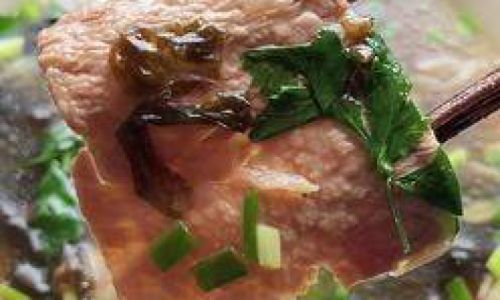
- Fresh ginger (1-inch piece), sliced
- Garlic (3 cloves), minced
- Green onions, chopped (for garnish)
-
Marinade:
- 1 tbsp soy sauce (light soy for saltiness)
- 1 tsp white pepper
- 1 tbsp cornstarch
- 1 egg white
- 1 tsp sesame oil
-
Seasonings:
- Salt to taste
- 1 tbsp rice vinegar (for brightness)
- Optional: Chili oil or Sichuan peppercorns for heat.
Tools and Equipment Needed
- Meat mallet: Essential for tenderizing. If unavailable, use a rolling pin or the back of a heavy knife.
- Sharp knife: For slicing meat thinly.
- Cutting board: Preferably wooden or plastic to avoid slipping.
- Large pot: For simmering broth.
- Bowls: For marinating and serving.
- Tongs or chopsticks: For handling meat slices.
Step-by-Step Preparation Guide
A. Selecting and Slicing the Meat
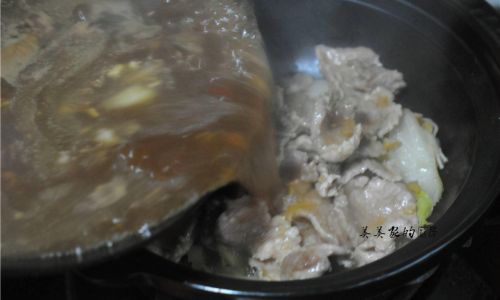
- Chill the meat: Freeze the tenderloin or flank steak for 30 minutes. This firms the meat, making slicing easier.
- Slice against the grain: Trim excess fat and cut the meat into 2-inch-wide sections. Using a sharp knife, slice each section into ⅛-inch-thick pieces. Slicing against the grain shortens muscle fibers, ensuring tenderness.
- Uniformity matters: Aim for consistent thickness to ensure even cooking.
B. Tenderizing the Meat Slices
- Prepare a workspace: Lay a sheet of plastic wrap over the cutting board. Place 4–5 meat slices on top, then cover with another layer of plastic wrap. This prevents sticking and keeps the mallet clean.
- Pound gently: Using the flat side of the mallet, strike the meat in a rhythmic, overlapping motion. Apply even pressure, focusing on thicker areas. The goal is to flatten each slice to 1/16-inch thickness without tearing.
- Check tenderness: The meat should feel pliable, with a slightly translucent appearance. Over-pounding can result in mushy texture, so stop once slices double in size.
C. Marinating for Flavor and Tenderness
- Combine marinade ingredients: In a bowl, whisk soy sauce, white pepper, cornstarch, egg white, and sesame oil.
- Coat the meat: Add the pounded slices to the marinade, ensuring each piece is evenly coated. Cornstarch acts as a tenderizer, while egg white creates a protective coating.
- Resting time: Marinate for 20–30 minutes at room temperature, or refrigerate for up to 4 hours for deeper flavor.
D. Preparing the Aromatic Broth
- Sauté aromatics: Heat 1 tbsp of vegetable oil in the pot. Add ginger and garlic, stirring until fragrant (30 seconds).
- Simmer the broth: Pour in the broth and bring to a gentle simmer. Add mushrooms and carrots, cooking for 10 minutes to infuse flavors.
- Adjust seasoning: Taste and add salt or rice vinegar as needed. For a richer broth, stir in a spoonful of miso paste.
E. Assembling and Cooking the Soup
- Lower the heat: Ensure the broth is at a bare simmer—too vigorous a boil will toughen the meat.
- Cook meat in batches: Using tongs, gently dip each marinated slice into the broth. Cook for 1–2 minutes until the meat turns opaque. Overcrowding the pot lowers the temperature, so work in 2–3 batches.
- Add greens last: Stir in bok choy during the final minute of cooking to retain its vibrant color and crispness.
- Finish with garnishes: Ladle the soup into bowls. Drizzle with sesame oil, sprinkle green onions, and add a pinch of white pepper.
Serving Suggestions and Garnishes
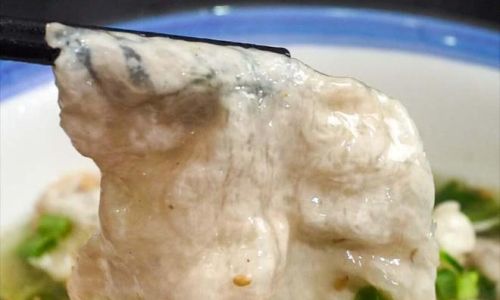
- Rice pairing: Serve with steamed jasmine rice or thin noodles for a heartier meal.
- Dipping sauce: Mix soy sauce, chili oil, and minced garlic for dipping meat slices.
- Herb boost: Tear fresh cilantro or basil leaves over the soup for aromatic freshness.
Regional Variations and Customization
- Sichuan-style: Add doubanjiang (fermented bean paste) and Sichuan peppercorns to the broth for a麻辣 (má là) kick.
- Cantonese twist: Use chicken broth and garnish with wolfberries (goji berries) for a sweet, nourishing touch.
- Vegetarian adaptation: Substitute meat with king oyster mushrooms, pounded and marinated similarly.
Expert Tips for Perfect Results
- Meat selection: Avoid fatty cuts, as they become chewy when pounded.
- Plastic wrap trick: Prevents the mallet from sticking and keeps raw juices contained.
- Broth clarity: Skim off impurities during simmering for a pristine finish.
- Egg white technique: Whisk it separately before adding to the marinade to avoid clumps.
- Resting period: Allows cornstarch to hydrate, creating a velvety texture.
Nutritional Benefits
- Protein-rich: A single serving provides 35–40 grams of lean protein.
- Vitamin boost: Bok choy and carrots offer vitamins A, C, and K.
- Low-calorie: Omitting heavy creams keeps the dish under 250 calories per bowl.
Common Mistakes to Avoid
- Overcooking meat: Remove slices immediately once they float or turn opaque.
- Insufficient pounding: Under-tenderized meat will be tough and chewy.
- Overcrowding the pot: Lowers broth temperature, leading to uneven cooking.
- Skipping marinade: Cornstarch and egg white are crucial for silkiness.
- Using dull knives: Results in uneven slices that cook irregularly.
Storage and Leftovers
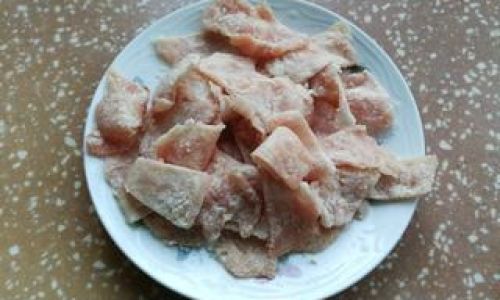
- Refrigerate: Store cooled soup in airtight containers for up to 3 days.
- Freeze: Avoid freezing, as the meat’s texture may degrade.
- Reheating: Gently warm on the stove over low heat to prevent broth separation.
Conclusion
Hammered meat slice soup is a testament to the ingenuity of Chinese cuisine, where simplicity meets precision. By mastering the art of pounding and marinating, you elevate humble ingredients into a dish that delights the senses. Whether enjoyed on a chilly evening or shared at a family gathering, this soup embodies comfort and culinary mastery. Experiment with regional variations, savor each tender bite, and let this recipe become a cherished part of your kitchen legacy.
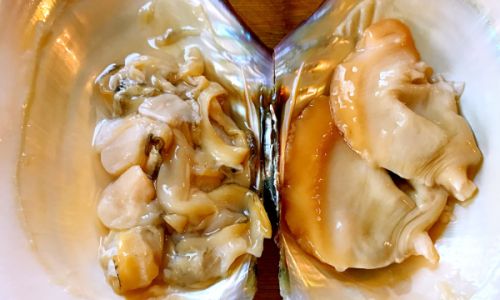





0 comments